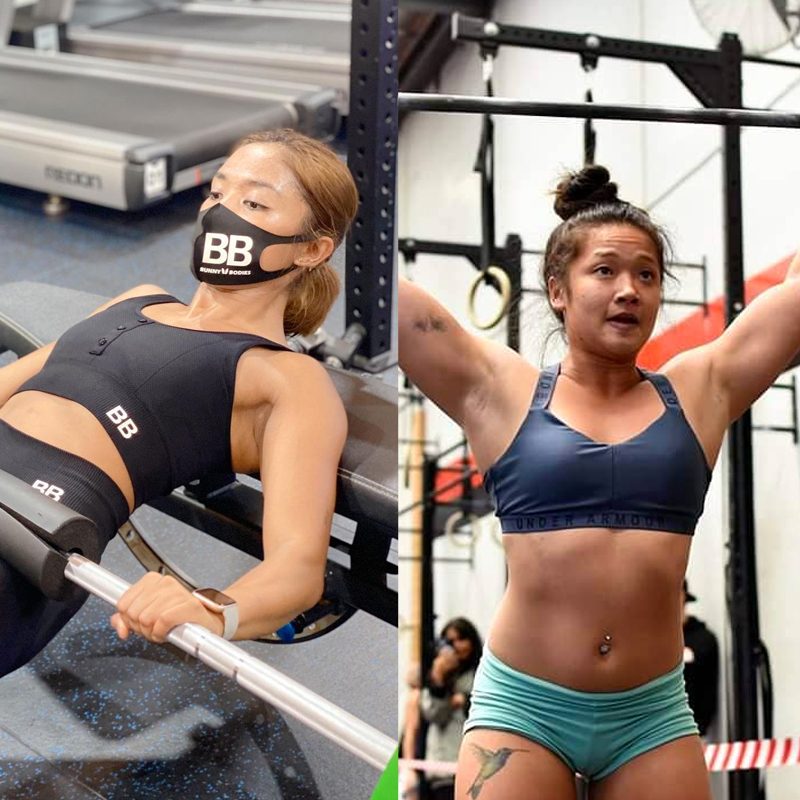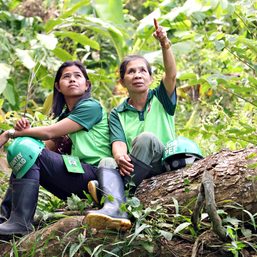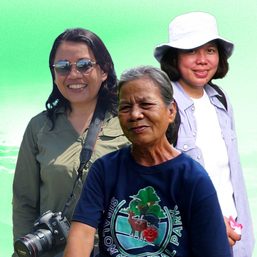SUMMARY
This is AI generated summarization, which may have errors. For context, always refer to the full article.

“I don’t want to look bulky.”
Many Filipino women have uttered this statement and shuddered at the thought of it when weight training comes into the conversation.
But as the strong, athletic body starts to break into the mix of media campaigns dominated by the slender physique, the fitness journey for women has been redefined and weight training is now more than welcome into their lives.
“Looking back at the history, the woman is always the one who looks after the kids, you stay at home you do the house duties versus the male is the one to have the ‘superior responsibility’ of going to work, and just have a bit more charge and have the dominance of being the one to be aesthetically fit,” says Filipino-Australian instructor Sheena Mabilangan of Rebel Philippines.
“So it’s just the tradition that stuck and it hasn’t been really diverted, so the goal is to try and educate.”
“Times are changing and it’s okay to lift weights like it’s gonna do more good than negative.”
Why are women scared of lifting weights?
The Philippine society is still in the process of coming to terms with the “strong woman.”
“If you were to look out into all the billboards and all the females that you see, what do you actually see associated with females?” Mabilangan asks.
Most advertisements still get women to endorse food brands, household equipment, supposedly gender-neutral products like shampoos, while getting stronger through fitness is likely more associated with men.
According to Mabilangan, her own female clients have told her that they have struggled with vicious comments by elders over the Filipino dinner table.
“You can also be punished in slight jokes, but it still actually can quite hurt someone to an extent, and sometimes that can get on the back of their heads like: ‘You know you won’t get a partner’ because I’ve had clients that told that to me,” adds Mabilangan.
There is also an intimidation factor for women trying to get into fitness – and even by the sight of heavy weights – since it’s a male-dominated discipline.
Fitness in the Philippines is still in the process of cultivating a community and sadly, it has been treated as a luxury.
Mabilangan is a pure-bred Filipino who grew up in Melbourne, where different sports and fitness education are readily accessible to everyone.
In the Philippines, group classes, gym memberships, personal trainers and even healthy food are being sold at a premium price.
This is why Mabilangan teamed up with REBEL, a local fitness app that provides free workouts, health education and recipes that uses ingredients that are readily accessible in the Philippines.
“So it really comes down to being comfortable in trying different things or even just, you know, understanding how it’s beneficial, which is why I started to teach it in workshops online last year essentially during the lockdown,” says Mabilangan.
‘Cardio is the best way to lose weight’
Most women turn to cardio as a way to lose weight and prevent a bulky physique.
But in recent studies, it’s not even “the best” way to lose weight.
“That’s already obsolete,” says former University Santo Tomas (UST) Salinggawi Dance Troupe member Carla Piscoso. “I used to think that way too.”
Piscoso, who is now an instructor for Ultra Lagree, Ultraboxx, Rise Nation and REBEL, preaches that “losing weight” and a workout program should be dependent on the goals of a person.
“There are different types of athletes – there are sprint athletes, there are endurance athletes, there are those who lift weights, or are training for functional fitness or performance training,” said Piscoso.
“There are those who just want to look strong and feel good. So it depends on your goal, and it will go down to your diet and programming and your habits.”
But even if she preaches tailor-fitting workouts to an individual’s goal, Piscoso’s clients have found lifting weights to be ideal in their body transformation.
“There are different ways to lose weight, not only lifting weights, but what I get from most of my clients is that they like it because they feel stronger, especially when they progress and retain or even regress,” says Piscoso, who is also a certified vinyasa instructor.
Piscoso also admits that she had to unlearn a lot of misconceptions about fitness throughout her journey, especially on how she viewed rest and weight fluctuations.
“When I was starting, I wouldn’t rest because I thought if I rested, I would gain weight – I had that wrong notion before that I had to unlearn it also along the years,” adds Piscoso.
“You don’t have to go out all the time because you need to rest.”
Building confidence as women
Aside from weight loss and strength-building, Piscoso believes that weight training makes women feel good and more confident in themselves.
“It’s not a bad life, it’s just a bad day,” says Piscoso, who reiterates that exercise produces endorphins in the body to help people cope with stress.
When training her clients, Mabilangan would rather ask how they feel rather than how they look.
“I would do a scale of energy levels like on a day to day basis – have they found that they’ve been moving well? Or [it will be] based on a movement they couldn’t complete the first week,” shares Mabilangan, who believes that looks will come later on.
Women are also subjected to different situations, especially in their roles as mothers and wives, and weight training has transformed how they physically manage day-to-day tasks.
“Weights are a good thing because let’s say they go: ‘I always feel tired I can’t carry my kid anymore’, so when we teach you how to do weights, we teach you how to move it like in a better position so you don’t hurt your back the next time you lift him up,” says Mabilangan.
How do I get started?
“You can’t jump into the barbell, if you don’t know how to do a pushup,” says Piscoso.
The best way to get started in lifting without experiencing intimidation is through body weight exercises.
“You don’t start with dumbbells immediately, you start with your own weight first, then when you see that you’re getting stronger, you progress to lightweight, or free weights then that’s when you bring them to the bar,” adds Piscoso.
For Mabilangan, it’s also important to starting making fitness a priority for Filipinas even if four-hour commutes have become the norm in the country.
But with the onset of the lockdowns due to the COVID-19 pandemic, it increased the awareness for women to start taking care of their own health through fitness.
“I think people wouldn’t have known how they actually worked until they were in a situation where things slowed down to see that I should actually prioritize my health,” shares Mabilangan.
“Because they didn’t feel nice or they just didn’t know how to keep themselves preoccupied and, things like that might have been like a second window to reevaluate what your priorities are.”
Mabilangan also advises that it’s best to capitalize on beginner-friendly free workouts online in order for women to just explore the different workouts out there. (Celebrating women: Get strong with free REBEL live workouts)
But more importantly, it is being able to connect with the right people to guide you on the journey and being able to feel welcomed into a community. – Rappler.com
Add a comment
How does this make you feel?





There are no comments yet. Add your comment to start the conversation.